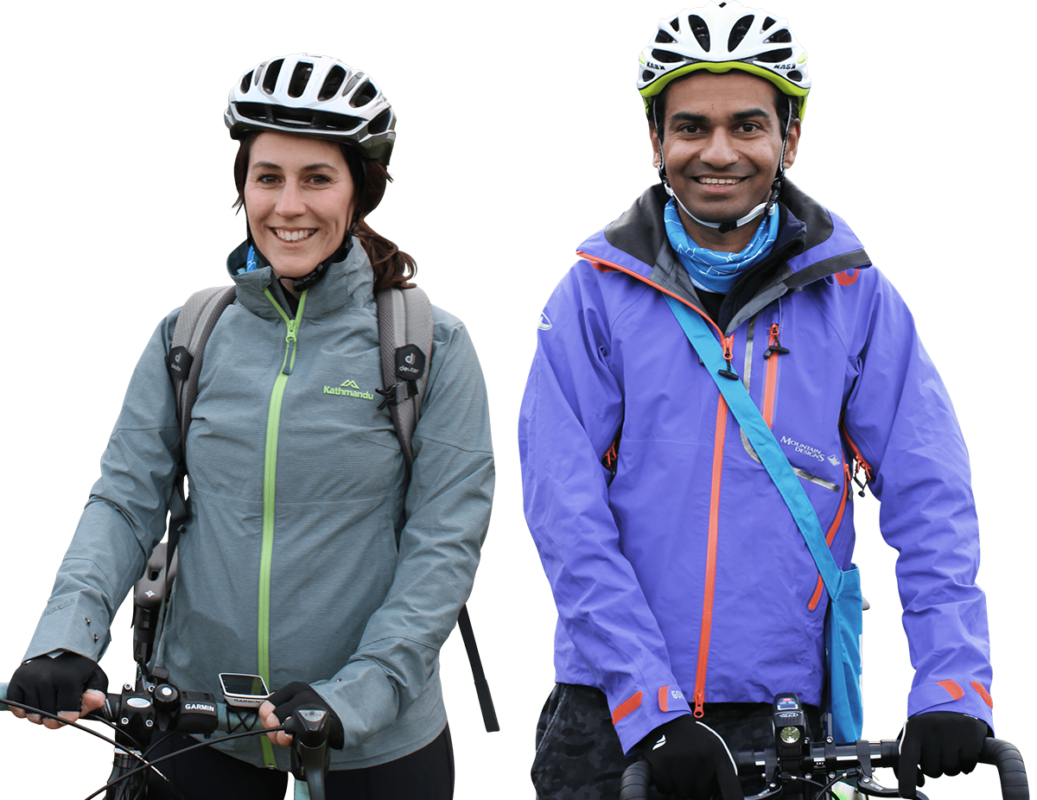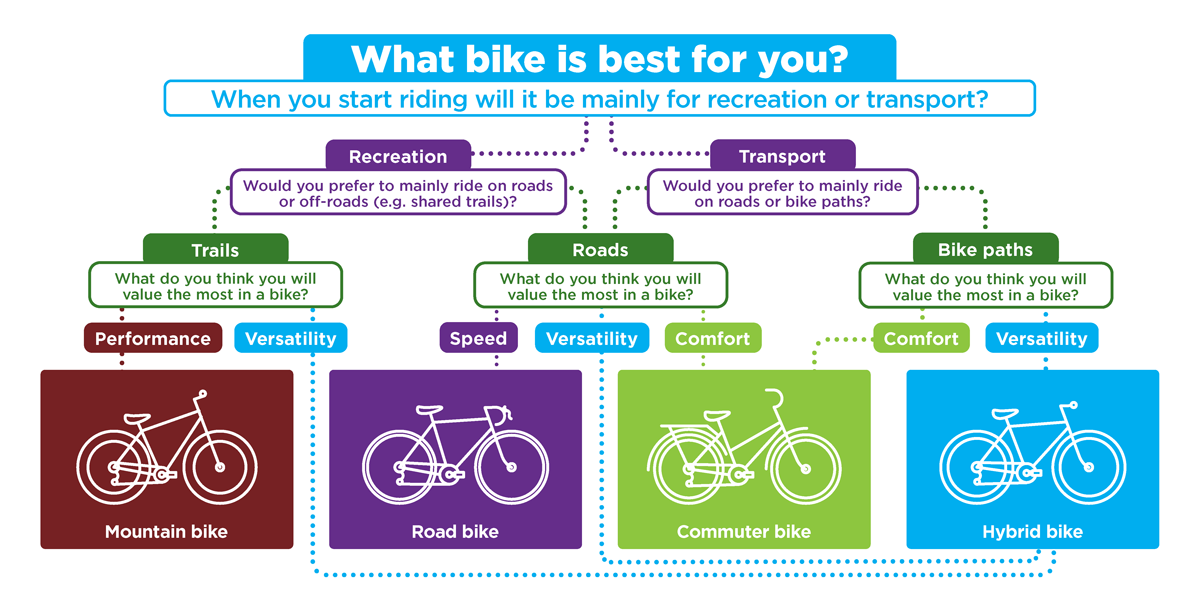Tips and resources
Get ready to start feeling happier and healthier every day!
Get started
Essential gear
What do I need?
The right bike
You don’t need to have the latest and greatest bike. You will be surprised about what you can find in a family or friend’s shed or garage.
If that’s no good, you can also try secondhand or chat to your local bike shop about an easy ride.
Any bike can get you started, as long as:
- It’s the right size for you and
- It’s roadworthy (the brakes work, the tyres aren’t worn out, etc).
Some of these things can be fixed yourself, but you can also visit a local bike shop for some specialist treatment and any new parts. They’ll also be able to get the size right for you. If you’re sourcing a bike second hand, here’s a quick guide to sizing your bike frame.
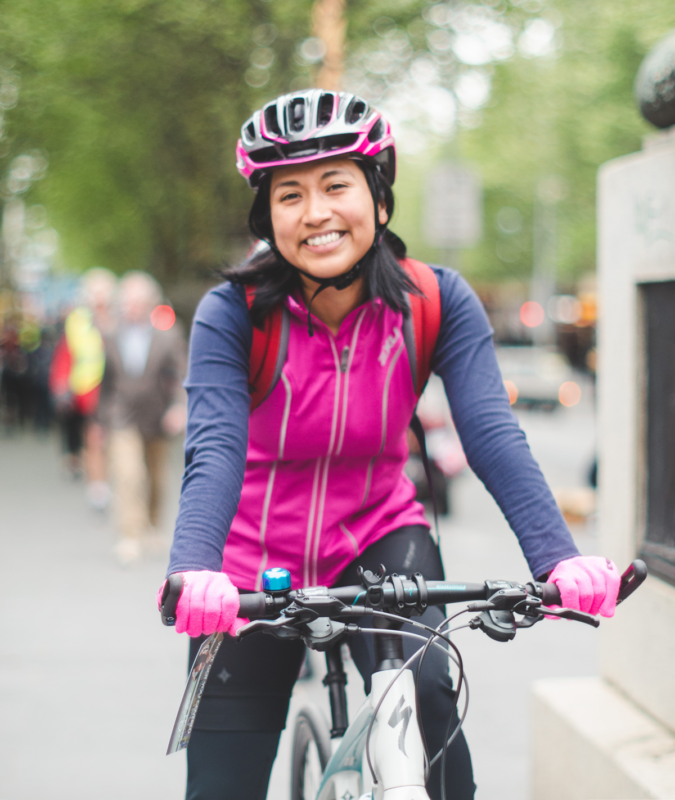
Essential gear
A helmet
Required by Australian law, your helmet must meet Australian standards, so be sure to get it from a bike shop.
Lights
Required by law in low light conditions. You need a white light for the front of your bike and a red light for the back (visible from 200 metres away). Check out our guide.
Lock
A lock is handy so you can lock up your bike at work, the shops or outside a cafe for a well-earned treat. Here’s our handy guide to locking your bike securely.
Bell
Use a bell to let other riders or pedestrians know you’re overtaking or crossing their path. Here’s some more info on how to communicate on the bike.
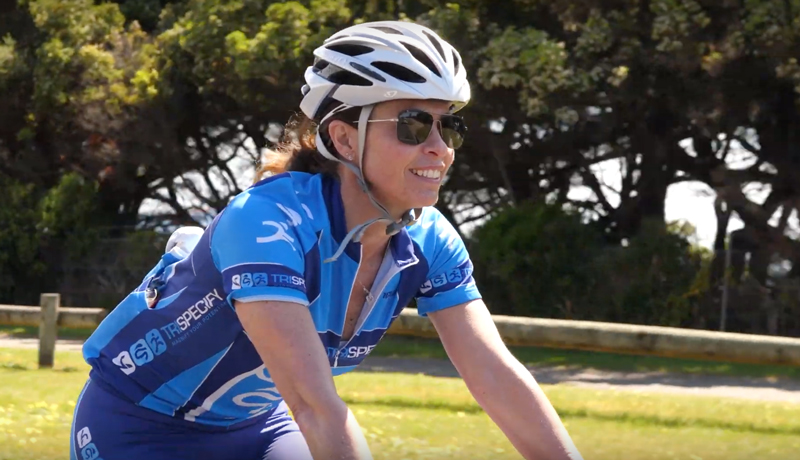
Nice to have gear
Not essential but depending on the distance you plan to ride or the weather, you might find the gear below makes you ride a little comfier.
Cycling gloves
They can add comfort and a bit of padding for your hands. In colder weather they’ll also keep your hands toasty!
Knicks
For longer rides lycra knicks (padded shorts) will help prevent soreness and the sweat-absorbing properties help prevent chafing.
Get prepared
Planning a ride
Where to ride?
If you’re riding to work for the first time, you might like to find somewhere off the road like a bike path or shared trail.
Shared paths
Shared paths offer car-free riding that’s great for casual rides and commuting. These often follow rivers and beaches, which are beautiful places to ride. Learn more on our maps page.
Rail trails
Rail trails can’t be beaten for a weekend outing. These are disused railway lines, converted into car-free shared paths through the countryside. Find out which rail trails are near you.
Training routes
Training routes often attract more road cyclists than car traffic on weekend mornings.
Mountain bike trails
Mountain biking challenges your skills more than any other type of riding – with the payoff of intense fun! Mountain bikers travel far for the best riding experiences but short options are often closer than you think. Have a look at these mountain biking spots.


Preparing for your ride
- Know the weather forecast and adapt if necessary – for instance, start earlier if it’s a very hot day or if an afternoon storm is predicted.
- Dress in layers so you can peel them off as you warm up or put them on if the weather turns sour. Include a light rain jacket as one of your layers.
- Carry water – depending on the distance of your ride, one bottle for each person per hour is a good amount on a cool day (you’ll need more if it’s hot!) Don’t forget to carry plenty of snacks with you to keep fueled up.
- Slip, slop, slap to protect against sunburn.
- Don’t be too ambitious – think five kilometres rather than 50, at least until you’ve developed your riding fitness. You’re better off to be itching for another ride than to be sore from going too hard too early.
- Ride with friends or tell someone where you’re going. Join the Bicycle Network strava club to hear about our upcoming group rides.
- Become a Bicycle Network member and you’ll pedal worry free with medical coverage, income protection and third party coverage every time you ride.
Map out your route
It’s always good to plan your route before you set off. Google Maps can display known bike routes – just select “bicycling” as your transport mode.
Google Maps can also map directions specifically for bikes. However, depending on where you are riding, these suggested routes vary from good to questionable. Remember you can always pull over and walk the bike past a tricky situation. For more info check out our guide on how to plan a bike-friendly route.
HOT TIP: Don’t get too immersed in the maps — get out there and find your way. It’s always great discovering new places to ride and is a great way to build confidence.
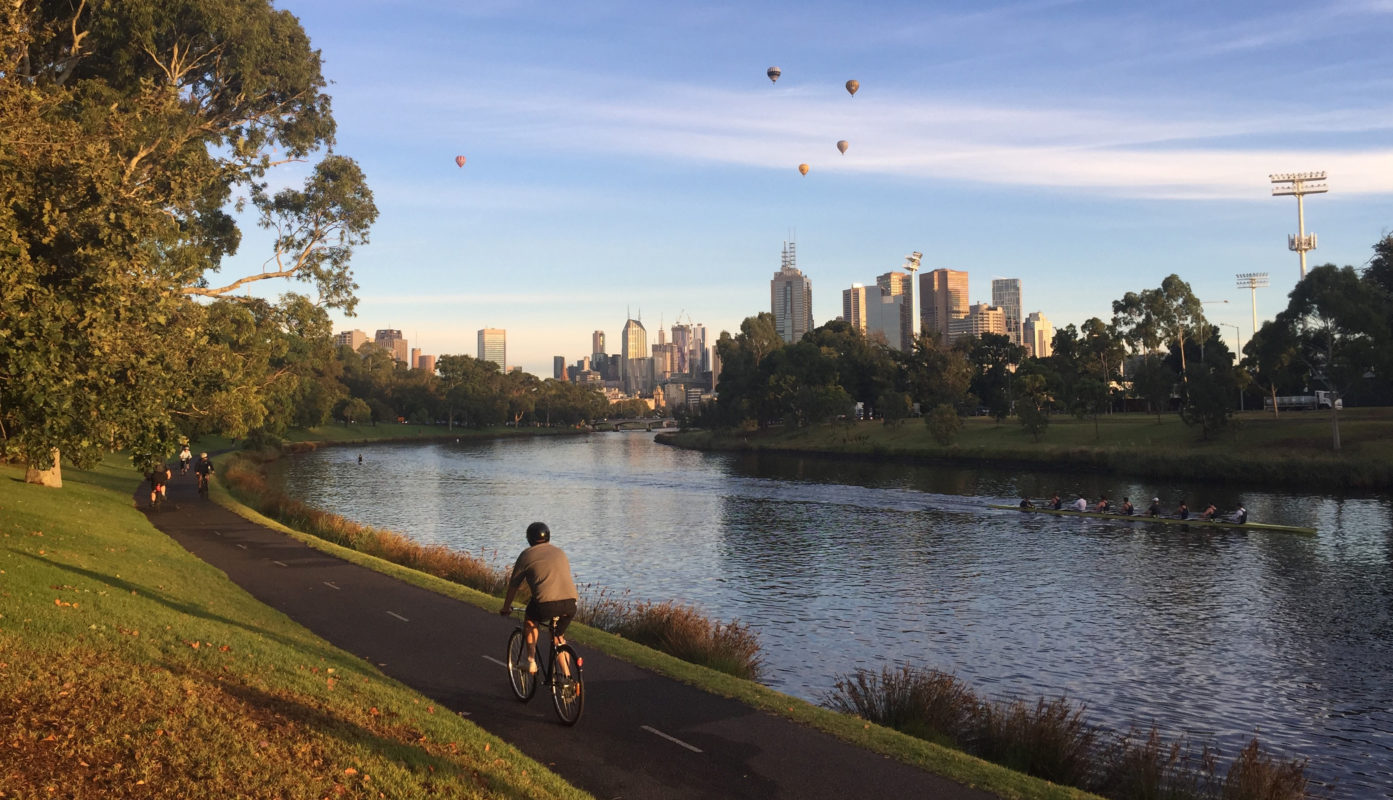
A quick guide
Road rules
Bikes are considered a ‘vehicle’ and are able to be ridden on the road. However children under the age of 13 (in Victoria) and 16 (in NSW) are able to ride on the footpath. An accompanying adult is allowed to join their child on the footpath.
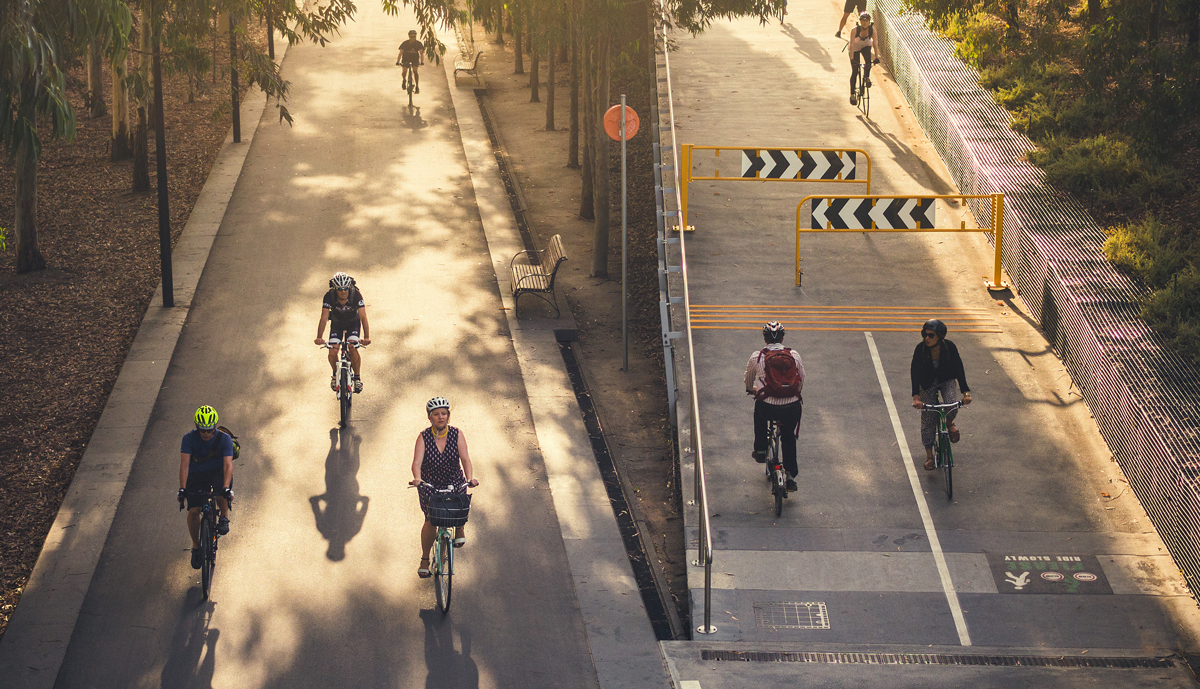
Shared paths
A shared path is for both pedestrians and bike riders and has signs and symbols to show that it is shared.
Bike riders on a shared path must keep to the left and give way to pedestrians. You should ring your bell when overtaking or call out “passing”. When you stop, you should pull off the path to allow others to pass.
Communicating with others makes shared paths easier for everyone. See our tips here.
Another good piece of advice is that when sharing spaces with pedestrians is to never ride faster than a person can run.
Riding on the road
On the road, most of the same rules apply for bikes as for cars. An exception is that bike riders can overtake on the left of cars.
You can also use a hook-turn to turn right anywhere a right-turn is allowed. This is safer than trying to merge with other traffic. When turning right, changing lanes and overtaking you must indicate with a hand signal.
Two riders can ride side-by-side if you’re not more than 1.5 metres apart, though sometimes it’s considerate to go single file to let traffic pass. Ride one metre out from the kerb and the same from parked cars to avoid dooring. Learn more about local road rules in your area.
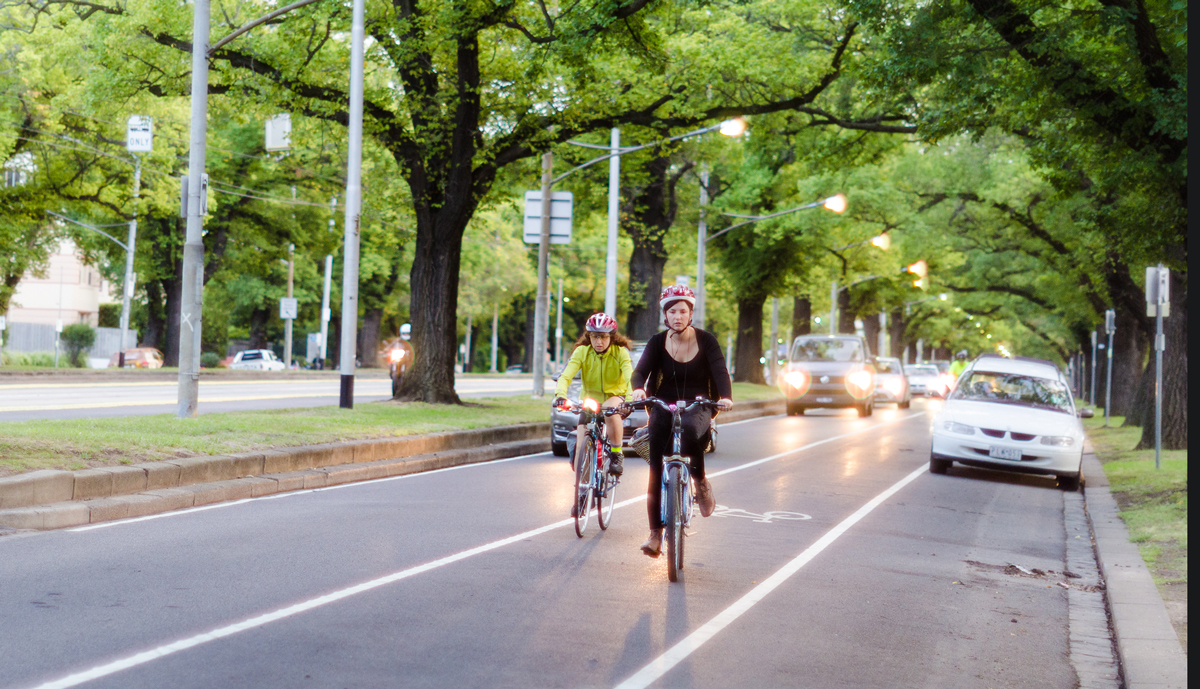
Keep things running smoothly
Looking after your bike
Bikes that haven’t been ridden for a while should be taken to your local bike shop for a service to replace worn parts – regular maintenance will save you in the long run! Here are some things to keep in mind when getting a service. There’s a few things below you can easily maintain at home too.
ABCD bike check
Before each ride, or each week, give your bike a quick scan with the ABCD check.
A is for air in the tyres
Keep them pumped up to the pressure recommended on the sidewall to roll smoothly and avoid punctures.
B is for brakes
Check the pads hit the rim properly and aren’t worn away; check the levers don’t contact the handgrips.
C is for chain
Turn the pedals backwards watching that every link in the chain moves smoothly; check the chain isn’t dry or rusty – clean and lubricate it (with lube from a bike shop) if necessary.
D is a drop test
Lift the bike 5cm off the ground and drop it, listening for rattles. Tighten any loose parts.
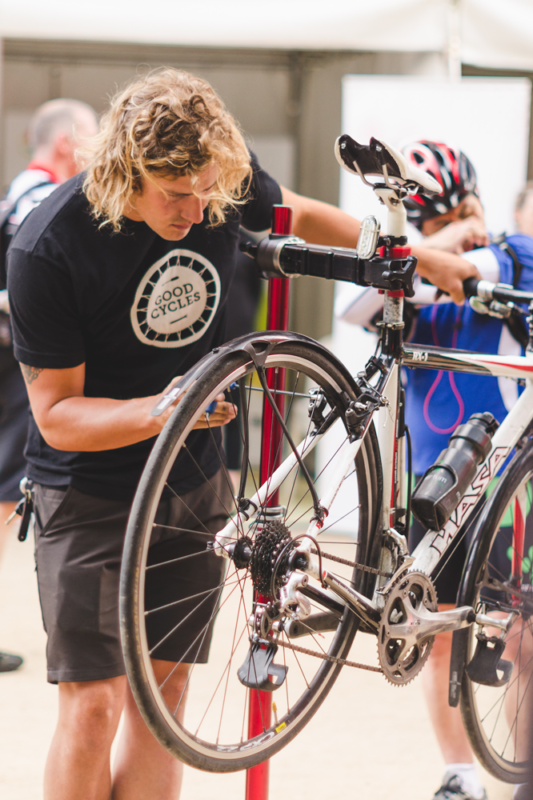
What are new riders' biggest questions?
FAQs
Everyone was new to bike riding once! Here’s the answer to some of the most common questions when you’re starting out.
Check the forecast before you ride to be prepared. Carry a rain jacket and a light layer for warmth. Shelter in a cafe – it usually doesn’t last that long. Take public transport home if it’s a wash out.
They’re quite easy to fix if you have a puncture kit. Learn how to fix it yourself. Otherwise, walk the bike to the nearest bike shop or to the nearest train station.
Trains are the best back-up for bike riders, so it’s good to know where the nearest services are. Otherwise, if you drove to your start point, perhaps someone could ride back and bring the car to you.
Don’t be too ambitious – think five kilometres rather than 50, at least until you’ve developed your riding fitness. You’re better off to be itching for another ride than to be sore from going too hard too early.
Kids can ride a long way – further than most adults actually. For a fun family ride, break it into very short sections (around 1 kilometre), create games and challenges, and expect to stop very often and eat lots of snacks and treats. The stops only need to be for five minutes and then they’ll be ready to go again. Lots of water is essential for everyone!
An ebike is a bike with a battery. These add between 30% and 300% extra power to your pedalling. Ebikes are great for providing confidence that you’ll be able to go the distance you want to. Learn more about ebikes.
Local riding resources
National
Rail trails Australia
Australia has a number of rail trails that are perfect for recreational riding in picturesque areas around the country. Rail Trails Australia has maps for all the rail trails in Australia.
Route maps
For more information on route maps and planning your ride we’ve put together links to free maps for a variety of bicycle routes across Australia.
Mountain bike trails
TrailMate provides a comprehensive summary of the major mountain bike trails across Australia, including a summary of each track, difficulty levels, and the facilities and services that are available at each location.
Membership
Bicycle Network has your back every time you ride, anywhere in Australia with medical coverage, income protection and third party coverage. You’ll also get access to a range of other benefits.
Rider Rescue
Get you where you need to go when you can’t ride any further. If your bike suddenly breaks down and can’t be repaired, or you get an unexpected injury, give Rider Rescue a quick phone call and we’ll send someone to collect you and your bike.
Enjoy your ride!
Get pedalling and have fun. It’s that simple.
Take time to enjoy the simple moments – the wind in your hair, a crisp clear morning, good times with mates, the green flow of traffic lights, or car-free trails. Not only will you save time and money, you’ll be happier and healthier for it.
Become our friend
Find out more about Bicycle Network and support us in making it easier for people to ride bikes.


